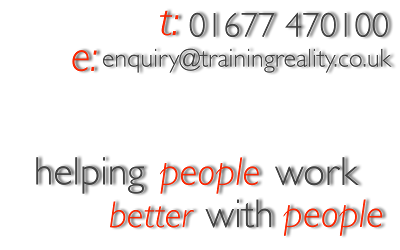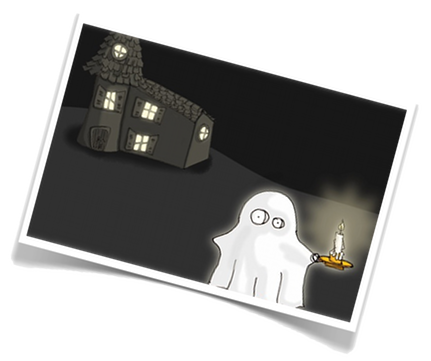Please press (at least!) one of these.
It costs you nothing, and (possibly) helps us spread the word!
Matching voice tonality
Thursday, 17 September 2009
NLP offers a great range of techniques for getting people to where you want them to be - some of which can be misused in the wrong hands, but which can also be hugely beneficial if used with positive intent to help someone else.
I used some tonality and body language exercises with a couple of groups last week, on a communication and teamwork training course (more of which later), but more recently (4am this morning, in fact!) I had the opportunity to use some voice tone skills with my daughter, who had woken from a nightmare.
After returning her to bed, I got her to begin by describing the story of the nightmare, emphasizing that it was just a story, a film. She was in a very kinaesthetic place - re-feeling the experience of being in the abandoned cathedral where the evil ghost and two human helpers were killing people and putting them in glass cases (don’t ask). From her tone, body and eye movements, it was clear that the experience was kinaesthetic.
After an initial matching of her tone, I gradually shifted both the tonality and the subject matter, trying as hard as possible to make a seamless transition. We discussed the story aspect, and moved on to a much more pleasant (and real) fairy story, which had lots of detail to remember, and things to visualise (they were memories from her birthday trip to a fairy trail, discussed here. Using gentle visual language, she calmed significantly, slowly began to smile, and actually fell asleep again. At breakfast, she had no recollection of the conversation, or indeed the nightmare.
This reminded me of a particular example that came up on Friday last week, during the training course. One female delegate was in the late stages of planning her wedding, and was both excited about some of it and nervous or concerned about others.
She willingly volunteered for an exercise, during which it became clear that the parts of the plan that she was excited about were mentally represented highly visually, whereas the bit she was worried about was very kinaesthetic. The distinction between the two was quite dramatic, in terms of her tone, eye movements and broader body language.
There are two, potentially powerful, things that come out of both of these examples, and that are particularly useful in management, especially at times of stress and pressure:
1) No-one is either exclusively “visual”, “kinaesthetic”, “auditory” and so on in their mental processing. What has struck me though, from personal experience as well as working with others, is that most people appear to have a tendency to process positive experiences in a different way to negative experiences.
By knowing this, and by developing an understanding of how we (and others) choose to process negative and positive experiences, we can help to change the experience by changing the way in which the experience is processed. Completely mis-matching your style from the start might rarely work, but slowly, carefully, and respectfully matching their style and moving gently towards their favoured positive style can be extremely helpful.
2) The second aspect is a self-management one. I know that at times, my response to situations is not the one I would ideally like. This is true for memories, current events, and visions or feelings about the future.
In a similar way to my volunteer on the training course, I “feel” worries about the future, and know how I “felt” at tough times in the past. But, when being, imagining, or recalling positive experiences, it is highly visual: I see myself doing the great thing.
--
There is another element in here, which is the difference between associated and dissociated experiencing - which will be the subject of a future entry. As a useful exercise though, start to think about how you process good and bad experiences, and gain an understanding of any differences...it was certainly a surprise for me, and bits of it are very likely to be for you too.
Please press (at least!) one of these.
It costs you nothing, and (possibly) helps us spread the word!





